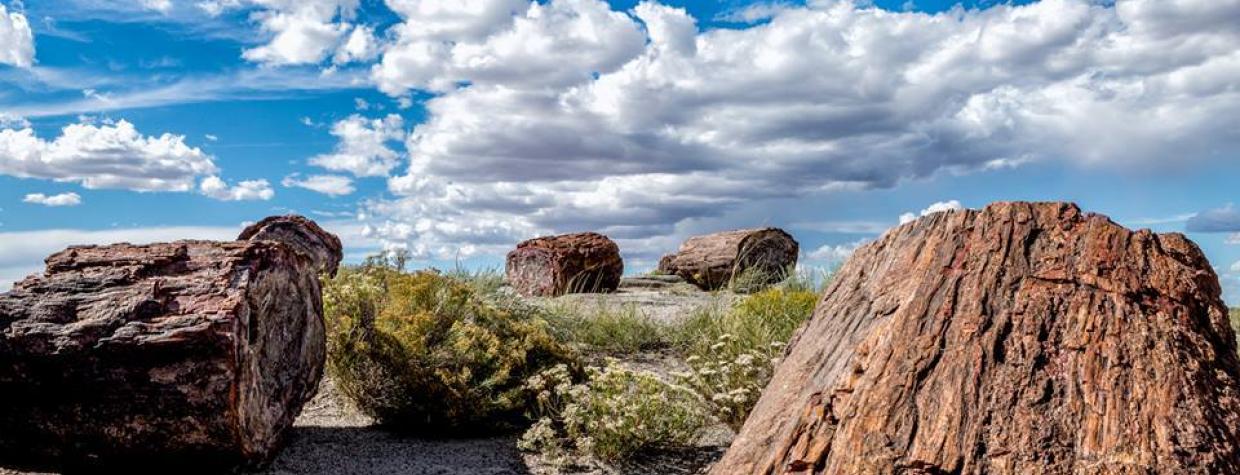Our February issue, on newsstands now, celebrates Petrified Forest National Park. Though the park is best known for its 200 million-year-old petrified wood, it also has an extensive human history. That's where park archaeologist William Reitze comes in. For the issue, we had Reitze annotate a story that originally appeared in the April 1963 issue of Arizona Highways. We also asked him a few questions about his work.
Tell us about your background. What led you to a career in archaeology, and how did you end up at Petrified Forest?
I have always loved archaeology. When I was a little kid, I got to go hiking and camping with my family quite a bit. We often got to go and see archaeology sites throughout Colorado and Utah. I love learning about the past and working outside, so archaeology seemed like a good career. I finished my undergraduate degree at the University of New Mexico and my master's at Colorado State University. I am currently finishing my Ph.D. at the University of Arizona.
I ended up at Petrified Forest through the student Pathways program. This program allows the Park Service to hire students to work in parks while they are in school. I was looking for a job, and this seemed like an interesting opportunity. When I started here, I really had no idea how much archaeology was actually preserved here at Petrified Forest.
What’s something about your career field that people might not know or understand?
A lot of the people I talk to think that archaeologists are always looking for the biggest sites or the rarest artifacts. But often, the more interesting questions that we can ask are how people in the past lived on a day-to-day basis. This involves looking at a lot of small sites through time and getting a detailed look at all of the artifacts that they left behind and how they relate to each other.
What’s a typical workday like for you? (If there is such a thing as a typical workday.)
Describing a typical workday is difficult. During the summer months, when there are more staff and the field crews are bigger, I spend a little more time working on paperwork to keep them in the field. But most days start at 7 a.m. (or 6 a.m., if it is a really hot summer). We will then typically go out into the field for the day. Our fieldwork is typically broken into three different types of activities. First is systematically looking for new sites on the landscape. Second would be documenting those sites in detail, including recording and mapping the artifacts and features found. Third is site preservation, or preventing erosion or other damage from occurring on these sites.
So on field days, I’ll typically be out hiking in the field until 4:30 p.m. In the summers, I’ll do this with a crew, but often in the fall, winter and spring, a lot of my field time is on my own. So on a field day, you’ll have to carry everything that you might need for the day, including water, your lunch and field recording gear.
But field days are always offset with office and lab days. All of the data that we collect needs to be timed up and entered into different databases. Artifacts need to be drawn, photographed and analyzed; site maps need to be made; and forms for the site files need to be written up.
What are some interesting things going on at Petrified Forest these days that relate to your job?
I think that the most interesting thing happening in archaeology at Petrified Forest is the boundary expansion. Right now, the park is doubling in size to protect additional archaeology sites, which is not something a lot of national parks are doing. This allows us to explore whole new areas, find new sites and set up new directions for research in archaeology.
What’s your favorite part of your job?
I love going into the field to discover something new. Here at Petrified Forest, we have the opportunity to find really fascinating new archaeology all the time, which is great. A lot of people who pass through Petrified Forest do not realize the human story that is here. People have been living and farming here since the end of the last ice age. We have more than 1,000 recorded archaeology sites, and there is a lot of human history here to experience.
To learn more about Petrified Forest National Park, pick up our February issue or visit www.nps.gov/pefo.

